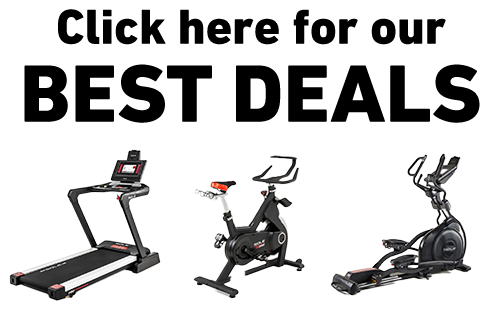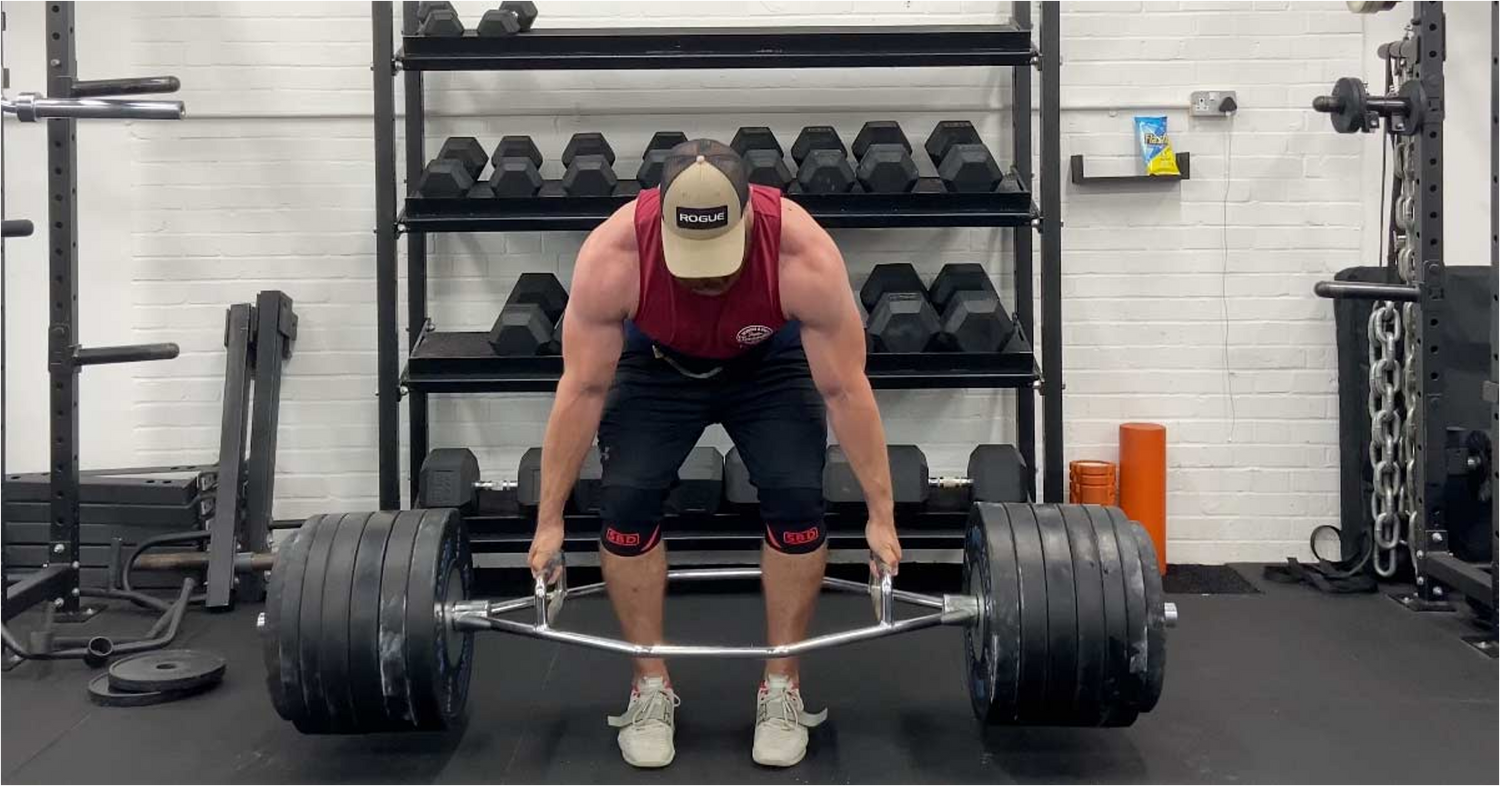Key Takeaways
- Trap bar deadlifts are gentler on your lower back (about 10–15% less stress) than conventional deadlifts, perfect if you have back concerns.
- Most people can lift 5–10% more weight with a trap bar because the physics actually work in your favor.
- Conventional deadlifts turn you into a posterior chain powerhouse (hamstrings and glutes), while trap bars give your quads more love.
- The "best" deadlift depends on your goals: trap bars for athletic performance, conventional for powerlifting glory.
- SOLE Olympic barbell delivers commercial-gym quality for conventional deadlifts at home.
Trap Bar Deadlift vs Conventional
Deadlift Dilemma
If you’re building total-body strength, few exercises can match the raw power-building potential of the deadlift. But walk into any gym and you'll likely spot two distinct approaches to it: the conventional barbell deadlift and the trap bar (hex bar) deadlift. Each variation offers unique benefits and challenges that might make one more suitable for your specific goals than the other.
|
At SOLE, we're proud to offer top-quality exercise equipment designed for home and gym use. Our machines are built to meet the highest standards of durability and performance, making them ideal for fitness enthusiasts at any level. SOLE Products
|
Trap Bar Basics
The trap bar's hexagonal frame lets you stand inside the weight rather than behind it, like you're in the middle of a very heavy hula hoop. (Image courtesy of Men’s Health Muscle)
Bar Design
The trap bar looks like someone took a regular barbell and bent it into a hexagon. This unique design shifts the center of gravity and changes the biomechanics of the lift in several important ways. Also called a hex bar, it was initially designed by powerlifter Al Gerard in the 1980s to work around a back injury while still allowing heavy pulls.
Most modern trap bars include two sets of handles: standard height and elevated handles that reduce the range of motion and starting depth. This allows the lifter to stand inside the frame rather than behind the bar, which creates a more centered position relative to the weight.
Hand Position
With the trap bar, your hands naturally fall into a neutral grip position (palms facing each other) at your sides. This position is generally more comfortable for the shoulders and wrists compared to the pronated or mixed grip required for conventional deadlifts. The neutral grip also distributes tension more evenly across the upper back and shoulders while reducing stress on the biceps tendons.
Most trap bars offer handles at around 16 inches off the ground, with raised handles approximately 24–26 inches high. This option provides flexibility for lifters with mobility limitations or those looking to reduce range of motion for specific training purposes. The width of hand placement is fixed by the bar design, unlike conventional deadlifts where grip width can be adjusted.
Body Positioning
Standing inside the trap bar naturally puts you in a more upright position compared to conventional deadlifts. Your center of mass lines up better with the weight, allowing for a more vertical torso and shin angle. It's like the difference between trying to pick up a box that's right in front of your feet versus one that's sitting a foot away from you.
You can position your feet shoulder-width apart or slightly wider, with toes pointed slightly outward. Since you're standing inside the bar, you have freedom to adjust your stance without worrying about scraping your shins, a pleasant change from conventional deadlifts where the bar wants to take a layer of skin as payment for each rep.
Conventional Deadlift
The conventional deadlift involves lifting a straight barbell from the floor while standing behind the bar. This position creates distinct biomechanical demands that challenge the posterior chain. (Image courtesy of Restore Physical Therapy)
Standard Setup
In a conventional deadlift, you position yourself behind a straight barbell with your feet approximately hip-width apart. The barbell should be over the middle of your foot (not the toes), with shins close to but not touching the bar in the starting position. Your hands grip the bar outside your legs, just beyond shoulder width, using either a double overhand, hook grip, or mixed grip for heavier loads.
The starting position requires hinging at the hips with a neutral spine, creating a more horizontal torso angle than in the trap bar deadlift. This position places significant emphasis on the hamstrings and glutes from the beginning of the movement.
Your shoulders should position slightly ahead of the bar when viewed from the side, with arms straight and lats engaged to create tension throughout the upper body.
Proper Form
The conventional deadlift starts with a hip hinge, not a squat. Think of it as trying to touch your butt to an invisible wall behind you while keeping your chest up and back straight. This creates the more horizontal torso angle that makes conventional deadlifts so effective at building your posterior chain.
The bar should travel in a straight vertical line, which means keeping it close to your body throughout the movement so that you might scrape your shins and thighs. At the top, stand tall with your hips pushed forward, but resist the urge to lean back like you just won the lottery. That's how you turn a back-building exercise into a back-breaking one.
Muscles
Trap Bar Activation
The trap bar deadlift hits your entire posterior chain while bringing your quadriceps to the party in a bigger way. EMG studies show high activation in your glutes, upper and lower back muscles, and quads. The more upright position shifts some of the load from your lower back to your legs, creating a more balanced lower body workout.
The neutral grip and hand position also engage your upper back differently, with more emphasis on your upper traps and less on your lats compared to conventional pulls. Your shoulders tend to stay in a more comfortable position throughout the movement, which can be great if you spend a lot of time hunched over a computer.
Conventional Activation
Conventional deadlifts are the undisputed champions of posterior chain development. They greatly activate the muscles in your erector spinae (the muscles that run along your spine), glutes, and hamstrings. The forward position of the barbell creates greater hamstring tension from the start, requiring these muscles to work harder throughout the entire movement.
Research shows that hamstrings are activated approximately 10–15% higher in conventional deadlifts compared to trap bar variations. That’s why powerlifters like it; it's simply more effective for developing those specific muscles. (Image courtesy of Inspire US)
Muscle Activation Comparison:
- Conventional Deadlift: Greater emphasis on hamstrings (↑15%), erector spinae (↑12%), and lats (↑8%)
- Trap Bar Deadlift: Greater emphasis on quadriceps (↑20%), upper traps (↑10%), and more balanced overall lower body activation
Quad Engagement
- Trap bar deadlifts show approximately 20% higher quadriceps activation compared to conventional deadlifts
- The more upright torso position creates greater knee flexion and extension demands
- Higher quad involvement makes the trap bar deadlift a better option for athletes needing explosive lower body power
- The increased quad recruitment can help address muscle imbalances for lifters with dominant posterior chains
Performance Benefits
Trap Bar Advantages
1. Lower Back Safety: The trap bar's design reduces stress on your lower back by about 10–15% compared to conventional deadlifts. If your back is already angry from sitting in chairs all day, this difference can be the deciding factor between training consistently and dealing with recurring back pain.
2. Heavier Loads: Most people can lift 5–10% more weight with a trap bar due to the improved leverage and center of gravity. This means you can expose your body to heavier absolute loads, which can be beneficial for building strength and bone density.
3. Beginner Friendly: The learning curve for trap bar deadlifts is much gentler. Most beginners can achieve reasonable form in 2–3 sessions, compared to the 5–8 sessions needed for conventional deadlift technique.
4. Quad Development: If you're looking to build your quadriceps, trap bar deadlifts are superior to conventional deadlifts. The increased quad involvement makes them somewhat of a hybrid between a deadlift and a squat, giving you more bang for your buck in terms of lower body development.
Conventional Advantages
1. Hip Hinge Mastery: Conventional deadlifts teach the hip hinge pattern in its purest form. This movement pattern is vital for athletic performance and daily activities, and mastering it through conventional deadlifts provides benefits that extend far beyond the gym.
2. Posterior Chain Focus: If your goal is to build impressive hamstrings, glutes, and back muscles, conventional deadlifts are unmatched. The emphasis on posterior chain development makes them ideal for addressing the muscle imbalances created by our chair-bound society.
3. Competition Carryover: For powerlifters, conventional deadlifts are non-negotiable since this is the variation used in competition. You can't train exclusively with trap bars and expect to excel at conventional deadlifts on the platform.
Master Your Deadlifts with SOLE's Premium Equipment
SOLE Olympic barbells provide the perfect foundation for conventional deadlift mastery. Their commercial-grade construction handles heavy loads while the specialized knurling ensures your grip never fails before your muscles do.
SOLE SW111 Olympic Barbell is absolutely perfect for mastering the conventional deadlift. This isn't some department store barbell that'll bend like a banana under heavy weight. We're talking 194,000 PSI tensile strength that stays straight even when you're pulling personal records.
The knurling on this bar deserves its own love letter. It's aggressive enough to lock into your hands when you're grinding out a max attempt, but not so sharp that it turns your hands into hamburger meat. The 28-mm diameter is the sweet spot for most hand sizes, giving you that secure grip without being uncomfortably thick.
Let's talk about the real secret: the SOLE Equipment Mat. Deadlifting at home without proper flooring is like driving without insurance; you might be fine, but one accident and you're in trouble. This mat protects your floors from both the barbell and your rage when you miss a lift. At 36.5" x 78", it gives you plenty of space for your stance and catch area.
If you are looking to ease into deadlifting or work around mobility issues, the SW180 Adjustable Dumbbells are a great alternative. You can perform suitcase deadlifts (like a trap bar but one side at a time) or Romanian deadlifts to build up your hip hinge pattern before tackling the barbell. The quick weight adjustment means you can find your perfect working weight without hoarding multiple dumbbells.
The SOLE+ App includes deadlift tutorials that break down the conventional technique step by step. You'll learn everything from proper setup to advanced cues that help you lift more safely and effectively.
Frequently Asked Questions (FAQs)
Can trap bar deadlifts replace squats?
While trap bar deadlifts do engage the quadriceps more than conventional deadlifts, they don't fully replace the benefits of squats. Research shows that squats create approximately 40% more knee extensor demand than even the most quad-dominant trap bar deadlift style. However, for individuals with mobility limitations or injuries that prevent comfortable squatting, the trap bar deadlift can serve as a valuable alternative that still develops significant lower body strength with less technical demand and joint stress.
Which deadlift variation builds more muscle?
Both variations effectively build muscle throughout the entire body, but they emphasize different muscle groups. Conventional deadlifts typically create greater hypertrophy stimulus in the hamstrings, spinal erectors, and upper back due to the increased time under tension in these muscle groups. Trap bar deadlifts generally produce better quadriceps development while still effectively targeting the posterior chain. For maximum muscular development, incorporating both variations and progressively overloading them over time will yield the best results.
Is the trap bar deadlift safer for beginners?
Yes, most strength coaches agree that trap bar deadlifts are more appropriate for beginners. The centered position inside the bar creates a more intuitive lifting pattern that beginners can master more quickly, often in 2–3 sessions versus 5–8 sessions for conventional deadlift technique. The reduced technical demands and lower risk of back injury make trap bar deadlifts an excellent teaching tool for introducing the hip hinge pattern before progressing to more technical variations like conventional deadlifts.
How much more weight can you lift with a trap bar?
Research consistently shows that most lifters can handle approximately 5–10% more weight with a trap bar compared to a conventional barbell deadlift. This difference comes from improved leverage, more advantageous center of gravity, and increased quadriceps contribution. Elite lifters sometimes show even greater differences, with some able to lift 15% or more on trap bar deadlifts compared to their conventional max. This loading advantage makes the trap bar useful for overload work, though the mechanical differences mean strength in one variation doesn't perfectly transfer to the other.
What SOLE equipment do I need for deadlifting at home?
The SW111 Olympic Barbell is your absolute must-have for conventional deadlifts. This bar is built to handle whatever you can throw at it. The 194,000 PSI tensile strength means it won't turn into a noodle when you load it up heavy. The knurling is just right too, giving you grip security without requiring a blood sacrifice from your hands. Pair it with the Equipment Mat to protect your floors, and you've got a legit deadlift setup.




Leave a comment
This site is protected by hCaptcha and the hCaptcha Privacy Policy and Terms of Service apply.